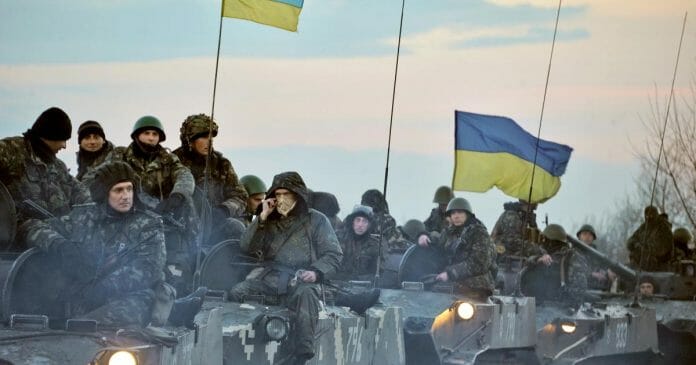The war between Russia and Ukraine is entering its 100th day, and the surprising resilience of Ukraine’s military makes it easy to misinterpret the current situation in Ukraine’s favour.
Not losing the war is itself a form of victory for Ukraine. In this case, however, not losing actually does not mean winning the war. But not winning is still not winning, as Ukraine is far from winning the war.
Ukraine is in far worse shape than commonly believed and needs and will continue to need a staggering amount of aid and support to actually win.
We love an underdog – a plucky little guy who beats the odds, fuels hope for us and allows us to feel we are on the morally superior side.
This is why Ukrainian President Volodymyr Zelensky has appealed so successfully to the world. His defiance against the odds gave us someone to root for against a bully.
It is worth remembering Ukraine has been fighting a Russian invasion since 2014. Between then and Feb 2022, almost 10,000 were killed in the Donbas (collectively the area known as Luhansk and Donetsk in eastern Ukraine), but little or no military progress was made.
Now Ukraine is fighting with that same army in an expanded theatre against a larger army – a testament to the pure courage of its troops that it has managed since Feb 24 not only to hold its line but also force the Russians into a retreat from Kyiv, Kharkiv, Chernihiv, and surrounding areas.
But is this true?
A week before Russia retreated from Kyiv, it has already told the whole world of its intention to withdraw from Kyiv in order to focus on the Donbas. Liberating the Donbas has always been its prime objective.
So, when Russia withdrew from Kyiv there’s a vacuum there, which was easily filled up by the Ukrainian army without a fight. Do you call this a meaningful victory for Ukraine when there is really no fighting to contend with?
And the Russian strategy of retreating in order to focus on the Donbas is what military experts describe as a fixing operation i.e. keeping the Ukrainian army fixated with “recapturing” the withdrawn areas, and thus did not reinforce its army in the Donbas to face the real battle until it is too late.
That has made it possible for Russia to now control significantly more Ukrainian territory than before Feb 24.
Whereas Ukrainian authorities controlled approximately 60% of Luhansk before the February invasion, the Washington-based Institute for the Study of War now estimates “Russia controls more than 95% of the broader region of Luhansk as Kremlin-backed troops focus on eastern Ukraine three months into their struggling invasion”.
But is it fair to describe the invasion as “struggling” when time and again Russia has stressed it has no deadline for accomplishing its special operation mission to liberate the Donbas?
The withdrawal of Russian troops from areas around Kyiv, Chernihiv, and Sumy, completed by April 3, was misleadingly seen as a significant victory for the Ukrainian authorities.
The removal of the threat from the capital made it possible to return diplomatic institutions, organise the visits of foreign delegations to the sites of past battles, and convince Nato countries that Ukraine would be able to withstand the war against Russia if it received more serious weapons.
All this was presented to Ukrainians as laying the groundwork for preparing a counteroffensive in Kharkov, Kherson, and the Donbas.
The mood in Ukrainian society was positive. The Russian army had already been stopped. It remained only to wait for Western help, and it would be possible to take revenge for 2014, when Moscow reabsorbed Crimea.
But by the end of May, it turned out the requested artillery and air defense systems were not enough to defeat Russia, and it was necessary to boost the army’s ranks to one million.
That is how belief in a speedy victory disappeared from Ukrainian society. Alexey Arestovich, a top adviser to the office of the President, who has somehow become the main military expert in Ukraine, as well as military bloggers associated with the nationalist Azov unit, are already talking about a difficult June and July.
As of this writing the Russian troops are now in control of about 70% of Severodonetsk.
Its next move will be capturing the nearby Lysychansk, as shown in the map above.
If Russia captures Severodonetsk, and nearby Lysychansk on the higher west bank of the Siverskyi Donets River, it will hold all of Luhansk – a key war aim for Moscow.
A sense that the tide of the war could be turning in favour of Russia comes as some, including former US Secretary of State Henry Kissinger, call for Ukraine to consider trading territory for a ceasefire.
Yet how to interpret the Russian advances has sharply divided military analysts, with many warning against drawing conclusions from incremental movements on a relatively small part of the battlefield.
Just as previous Russian setbacks led to an over-optimistic consensus on Ukraine’s ability to win the war, relatively minor gains are now driving the kind of pessimism reflected in Kissinger’s remarks, Lawrence Freedman, Emeritus Professor of War Studies at King’s College London, wrote in a Friday (May 27) blog post.
“This indicates the ever-present danger for those analysing the course of this war of getting too far ahead of events on the ground,” Freedman wrote. “The best assessment of Russian strategy now is that it seeks to take what it can from the current effort and then dare Ukraine to try to seize it back.”
So far, according to analysts, Ukrainian commanders have not taken that bait, either because they are building up reserves and awaiting the arms needed from the US and other allies to make a successful counter-offensive possible, or because they are themselves suffering heavy losses and cannot do so.
With Russian artillery now in reach of supply roads to the pocket, Ukraine’s commanders face difficult choices: To bring in reinforcements under fire, to withdraw under fire, or mount a Mariupol-style defense after encirclement, in the hope that a counter-offensive and relief will come in time.
“All options are militarily and politically risky,” said Mykola Bielieskov, a military analyst at Ukraine’s National Institute for Strategic Studies, a government think tank.
“It’s very difficult to explain to Ukrainians why the Russians still have the ability to move forward, after being rolled back from Kyiv and Kharkiv. So even if it is not a major success, this local success would have negative repercussions for the government.”
Bielieskov blamed the slowness of even the US administration to make the move from giving Ukraine’s soldiers what they need to survive Russian attacks, to giving them what’s required to compete with Russia’s quantitative advantage in artillery and mount counter-offensives.
Rather than the 90 howitzers the US has promised to date, Ukraine needs 400 to 500, as well as Multiple Launch Rocket System (MLRS) with ranges of at least 70 to 80 km, weapons that will allow it to damage Russian forces and firepower at depth, according to Bielieskov.
It has become very clear as the Russia-Ukraine war enters its 100th day, that more and more cool and level-headed people are saying the endgame lies at the negotiation table.
Ukrainian President Volodymyr Zelenskyy appeared ready for compromise on key questions in March, for example, offering to set aside Kyiv’s ambitions of joining the Nato and accept neutrality.
However, Ukrainian attitudes have hardened since March. That reflects growing confidence in the abilities of the Ukrainian military to deal with the Russian offensive.
It could also be because of persuasion and advice from allies like the US, UK, and EU that Ukraine can win the war or put itself in a position of strength during negotiation with their assistance in the form of weaponries, funds, and severe sanctions against Russia.
But all bets are off if Zelenskyy insists on a full restoration of Ukraine’s borders as of 1991 for negotiation to commence. It is a non-starter, as it is tantamount to leaving the door closed for diplomacy.
Jamari Mohtar is the Editor of Let’s Talk!, an e-newsletter on current affairs.









